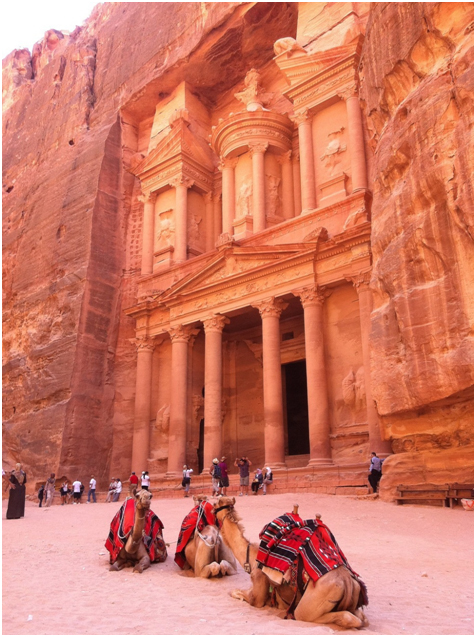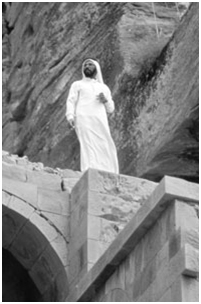 Half-built, half-carved into the rock, surrounded by mountains pierced with passages and gorges, Petra is undoubtedly one of the world’s most famous archaeological sites ever elaborated by Nature and Man, and Jordan’s most valuable treasure. Admired for its refined culture, massive architecture and ingenious complex of dams and water channels, Petra is now a UNESCO World Heritage Site and one of the New 7 Wonders of the World.
Half-built, half-carved into the rock, surrounded by mountains pierced with passages and gorges, Petra is undoubtedly one of the world’s most famous archaeological sites ever elaborated by Nature and Man, and Jordan’s most valuable treasure. Admired for its refined culture, massive architecture and ingenious complex of dams and water channels, Petra is now a UNESCO World Heritage Site and one of the New 7 Wonders of the World.
Inhabited since prehistoric times, Petra was the legacy of the Nabataeans, and during Hellenistic and Roman times it was a major caravan centre for the incense of Arabia, the silks of China and the spices of India, and one of the most important crossroads between Arabia, Egypt and Syria-Phoenicia. As you enter the valley, you will be overwhelmed by the natural beauty of the place and its outstanding architectural achievements. There are hundreds of elaborate rock-cut tombs with intricate carvings.
The Petra basin boasts over 800 individual monuments, including buildings, tombs, baths, funerary halls, temples, arched gateways, and colonnaded streets, that were mostly carved from the kaleidoscopic sandstone by the technical and artistic genius of its inhabitants. Petra sights are at their best in early morning and late afternoon, when the sun warms the multicolored stones, you can view the majesty of Petra as it was seen first when discovered in 1812 after being lost by the 16th century for almost 300 years!
Petra is definitely breathtaking and unforgettable.
LITTLE PETRA (Al Beidha)

Though located only about 10 minutes away from Petra via a paved road, al Beidha (Little Petra) is seldom visited by tourists. Similar in many ways to its big brother or sister, it is not as spectacular. Some believe Little Petra was once an important suburb, located where caravan routes that linked the Arabian Peninsula, Gaza, Egypt and the Mediterranean coast converged.
At Little Petra’s entrance, there is a classical temple guarding a narrow, 350-meter entrance ravine called Siq al-Barid. This siq, similar to Petra’s, leads to temples, tombs, houses, water channels and cisterns carved out of the same red rock as seen in Petra. There are also the partial remains of a painted fresco dating from the first century, A.D., on one of these houses.
